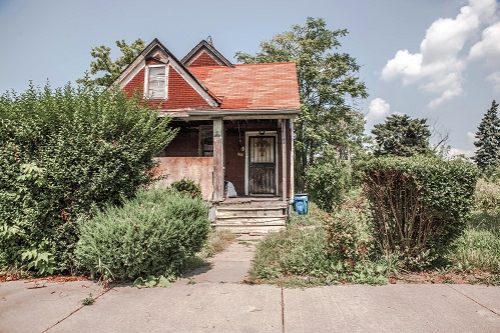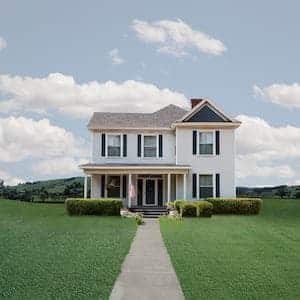Does insurance cover natural disasters?
Yes, insurance covers natural disasters, but you need the right coverage. After a disaster strikes, people often are looking for quick answers to critically important questions:
- Am I covered?
- What should I do first?
- Who should I contact first?
- When do I file a claim?
- How do I start the claims process?
- Is it worth filing a claim?
- How long does the process usually take?
- How long until I receive a check?
- What if my claim is rejected?
Here, we’ll answer those questions and more for the most common natural disasters in the U.S. so you can make sure you have the natural disaster insurance coverage you need.
Hurricanes
In the past 20 years, 22 hurricanes have made landfall in the mainland U.S., six of which were category 4 hurricanes – and one a category 5 hurricane (Hurricane Michael). Half of those category 4 hurricanes have happened since 2020.
While Katrina (2005, $193.8 billion) is still the costliest hurricane in U.S. history, the past decade has seen the second – and third-most costly: Hurricane Harvey (2017, $153.8 billion) and Hurricane Ian (2023, $115.2 billion).
Although hurricanes are largely associated with Florida and the other Gulf Coast states, hurricane damage is seen all the way up the East Coast; Hurricane Sandy hit the northeast in 2012 and did $82.5 billion in damage. If you live in a state where hurricanes can hit, you need the right insurance.
Hurricane insurance comprises multiple policies and endorsements that provide a complete umbrella of protection. They include home insurance, auto insurance, flood insurance and, in some cases, separate or endorsed windstorm coverage.
Find out everything you need to know about hurricane insurance and find the best hurricane insurance with our guide to coverage and companies.
Floods
Floods are the most common natural disaster in the U.S., with 90% of disasters involving flooding, according to the Department of Homeland Security. Flooding causes more damage and loss of life than any other disaster, although it’s often associated with another disaster, such as the storm surge from a hurricane.
“When we think about severe weather, the cost of damage is often driven by wind and water, but not in that order. Water tends to be the most damaging, so looking at how water might get into your home is important. Do you have parts that get wet when it rains a lot, such as a basement? Are you in a flood zone?” Schlegelmilch says.
Unlike hurricanes, floods can happen anywhere – flash floods, spring snowmelt, heavy rains and other phenomena can cause flooding. And regardless of what causes overland flooding, standard home insurance doesn’t cover it. For that, you’ll need a separate flood insurance policy. Insurance.com’s 2023 Home Insurance Survey found that less than one-third of those polled had flood insurance policies.
Find out everything you need to know about flood insurance and find the best flood insurance companies with our guide.
Tornadoes
More than a thousand tornadoes touch down in the U.S. every year – 1,197 touched down in 2023. Mississippi had the most tornadoes that year, followed by Texas, Alabama and Minnesota. But tornadoes can happen anywhere, even in unexpected places.
Home insurance covers tornado damage to your home and property, while auto insurance will cover your car. But do you have enough coverage to replace your house completely and everything in it?
Find out everything you need to know about tornado insurance.
Earthquakes
Earthquakes are largely associated with the West Coast's multiple active fault lines. The San Andreas Fault in California is the most famous, but the West Coast’s Hayward and Cascadia and Alaska-Western Canada’s Denali faults are also among the major danger zones. An earthquake can happen anywhere – the New Madrid fault line runs through states like Missouri, Tennessee and Illinois – states not usually affected by earthquakes. And there are many other fault lines throughout the country.
Because earthquakes are difficult to predict, it’s hard to prepare for one beyond constructing homes that can withstand seismic activity. But you can prepare to recover from an earthquake by ensuring you have the right insurance.
Homeowners insurance doesn’t cover land movement, but you can purchase an endorsement or separate policy to protect against earthquake damage.
Find out everything you need to know about earthquake insurance and whether earthquake insurance is worth it for you.
Wildfires
Wildfires can happen in any state; they spread rapidly and often put homes at risk. Climate change has caused more and bigger wildfires, and only Delaware and D.C. made it through the year without one in 2021 (the most recent available data from the Insurance Information Institute).
The top two states for homes at risk from wildfire are California and Florida, with more than 1.2 million and more than 800,000 homes at risk of fire, respectively. But hundreds of thousands of homes across the western and southern states are at risk.
The good news is that a standard home insurance policy covers fire, even from wildfires, but you need to have enough coverage.
Find out everything you need to know about wildfire insurance.
Winter storms
Winter storms may differ from place to place but can happen just about anywhere. Recent years have seen Texas and California affected by snow, ice and freezing temperatures, while heavy snowfall in northeastern states set records and wreaked havoc.
Snow and ice can freeze pipes, damage roofs and gutters and cut off power. The polar vortex that froze Texas in February of 2021 resulted in $15 billion in damage. It’s the costliest winter storm on record, but damaging storms happen every year in much of the country.
Home insurance does cover winter storm damage, as does auto insurance, but it’s vital to have enough coverage in place.
Find out everything you need to know about winter storm insurance.
Storms and hail
While not as destructive as hurricanes, severe thunderstorms can cause an incredible amount of damage. High winds, heavy rain, lightning and hail all result in serious damage to roofs, siding, windows and cars. State Farm, the nation’s largest home and auto insurance company, reported that it paid $3.5 billion in hail damage claims in 2022 – and that’s just one company.
Home and auto insurance will cover damage from a thunderstorm, provided you have the right coverage and enough to cover the damage. Because hail damage can be cumulative and multiple storms may occur in a single week – sometimes even a single day – claims can be complicated.
Here's what you need to know about insurance for storms and hail damage.
Natural disasters and claims
Filing a claim after a natural disaster can be confusing, time-consuming and frustrating. There may be multiple policies and even multiple insurance companies involved. And to make things more challenging, you’re not the only one filing a claim; insurance companies are often overwhelmed after a natural disaster.
Getting through the claims process requires patience, perseverance and knowledge of the process and your rights and responsibilities. From protecting your home from further damage and cataloging the damage to ensuring your home or car is repaired correctly, natural disaster insurance claims can be arduous. But with the right steps, you’ll return to where you were before nature did its worst.
“You should…photograph any damage and try to speak to your insurance agent before starting repairs. Sometimes inspections are needed; other times, photos may be enough. And be careful not to do work you are not qualified for, as this can be very dangerous,” says Schlegelmilch.
Find out everything you need to know about how to file a claim after a natural disaster.
Getting insurance in natural disaster-prone areas
As natural disasters across the country increase in frequency and severity, home insurance is becoming more expensive and, in some places, harder to find. Insurance companies have pulled out or reduced policy options in California, Florida, Texas and Louisiana, and other states are bracing for similar issues.
Here's what you need to know about how to get insurance in a natural disaster-prone area, from what happens if your home insurance is canceled and what to do if you can't get home insurance to the details on state insurers of last resort if you have no other options.
Natural disaster preparation
Preparation is more than half the battle when it comes to facing a natural disaster. While we can’t always see a disaster coming, we can take steps well in advance to prepare our homes, cars and ourselves.
First, make sure you know your insurance is ready. Experts agree that many homes are underinsured, yet homeowners overestimate their coverage. Sit down with your insurance agent or call your insurance company and review your coverage to make sure it's correct.
Make sure you have a plan and know what resources are available in your area in a crisis. Which state is most prepared for a natural disaster? And what can you personally do to prepare for what nature throws your way?
“The main things to consider are first and foremost, you may need to leave quickly or stay in one place for a while with limited services. So think about where you might go if you need to leave and what you would need to take with you,” Schlegelmilch says.
“Also, think about how you will get in touch with family and loved ones in the event of a disaster and if you have any special needs such as medication or special equipment that helps keep you independent. If you have to stay in one place for a while, you may have reduced services, such as no electricity, water or other utilities. How will you cook, clean, and keep food fresh? It is also important to look at what services may be nearby, such as shelters, as well as checking in with your neighbors,” he says.
Here are some helpful resources.
- Ready.gov - Tips for disaster preparedness, sign up for emergency alerts.
- Federal Emergency Management Agency (FEMA) - A step-by-step guide to creating a disaster plan with tips.
- Red Cross - Templates for emergency planning, tips for preparing.
- National Institutes of Health - emergency preparedness resources.
- Centers for Disease Control (CDC) - Health and safety and disaster resources.
Sources:
- Hurricane Research Division, Atlantic Oceanographic and Meteorological Laboratory. “U.S. Hurricane Landfalls.” Accessed May 2024
- Department of Homeland Security. “Natural Disasters.” Accessed May 2024
- National Centers for Environmental Information. “Costliest U.S. Tropical Cyclones.” Accessed May 2024
- National Centers for Environmental Information. “U.S. tornadoes.” Accessed May 2024
- Insurance Information Institute. “Facts + Statistics: Tornadoes and Thunderstorms.” Accessed May 2024.
- Missouri Department of Natural Resources. “Facts about the New Madrid Seismic Zone.“ Accessed May 2024
- U.S. Geological Survey. “Faults.” Accessed May 2024
- Insurance Information Institute. “Facts + Statistics: Wildfires.” Accessed May 2024
- Insurance Information Institute, “Facts + Statistics: Winter Storms.” Accessed May 2024
- State Farm. “State Farm reports $1 billion increase in hail claim costs.” Accessed May 2024.




